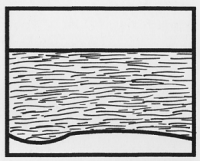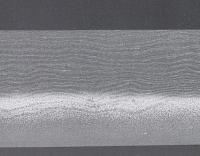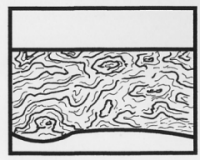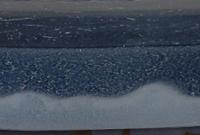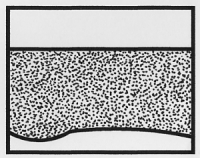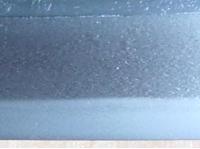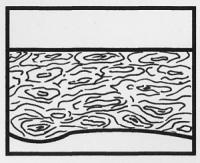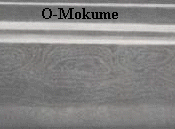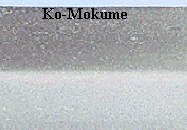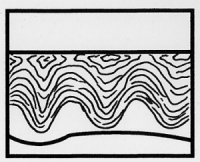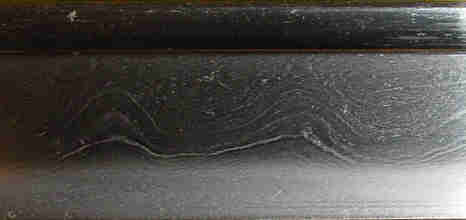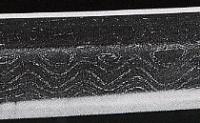Hada - Grain Pattern in
Japanese Swords
|
Since Japanese Swords are made from
folded steel, the fold lines, or weld lines,
are visible. These fold lines, called Hada, vary
depending on the way the blade was folded, the number of times folded and
the direction of the fold. There are many variations of the hada pattern and
only the standard examples are presented here. All of these can have small
and large variations, stretched variations and mixed variations. The
references will show and define more patterns. |
|
| Masame The grain is fairly straight and not crossing. There can be waves and can look like a topographic map.
|
|
| Itame This commonly is described as wood grain pattern. There are swirls and straighter areas but they are not connected or regular.
|
|
| Konuka This pattern often called rice grain and is similar to Nashiji hada. Hizen blades are known for this hada.
|
|
| Mokume This grain pattern looks like burls or connected swirling pattern. They usually look like knots and can be stretched out. O-Mokume is in large patterns. Ko-Mokume is in small paterns.
|
|
| Ayasugi This is a regular pattern of curved lines with waves in it. The lines do not cross, but are very different than Masame. Ayasugi is often seen in Gassan and Naminohira school blades.
|
|
| Muji This gain pattern is difficult to identify and can't really be seen. The grain is there but so small that its not seen with standard polishing techniques.
|
|
| Nashiji Called pear skin, this style results from
the steel being folder a few more times than the standard Mokume. |
|
